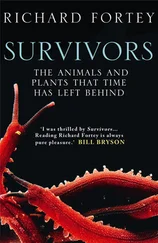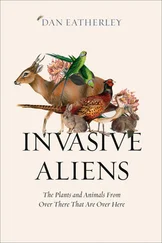Andrew H. Cobb - Herbicides and Plant Physiology
Здесь есть возможность читать онлайн «Andrew H. Cobb - Herbicides and Plant Physiology» — ознакомительный отрывок электронной книги совершенно бесплатно, а после прочтения отрывка купить полную версию. В некоторых случаях можно слушать аудио, скачать через торрент в формате fb2 и присутствует краткое содержание. Жанр: unrecognised, на английском языке. Описание произведения, (предисловие) а так же отзывы посетителей доступны на портале библиотеки ЛибКат.
- Название:Herbicides and Plant Physiology
- Автор:
- Жанр:
- Год:неизвестен
- ISBN:нет данных
- Рейтинг книги:5 / 5. Голосов: 1
-
Избранное:Добавить в избранное
- Отзывы:
-
Ваша оценка:
- 100
- 1
- 2
- 3
- 4
- 5
Herbicides and Plant Physiology: краткое содержание, описание и аннотация
Предлагаем к чтению аннотацию, описание, краткое содержание или предисловие (зависит от того, что написал сам автор книги «Herbicides and Plant Physiology»). Если вы не нашли необходимую информацию о книге — напишите в комментариях, мы постараемся отыскать её.
Discover the latest developments in herbicide and weed biology Herbicides and Plant Physiology,
Arabidopsis
Herbicides and Plant Physiology
Herbicides and Plant Physiology — читать онлайн ознакомительный отрывок
Ниже представлен текст книги, разбитый по страницам. Система сохранения места последней прочитанной страницы, позволяет с удобством читать онлайн бесплатно книгу «Herbicides and Plant Physiology», без необходимости каждый раз заново искать на чём Вы остановились. Поставьте закладку, и сможете в любой момент перейти на страницу, на которой закончили чтение.
Интервал:
Закладка:
13 So how can politicians, growers, farmers and the agrochemical industry become more ecologically aware and promote more sustainable practices?The industry should recommend and use technologies for a more precise application of agrochemicals that will reduce application volumes and cumulative dosage.Greenhouse gas emissions can be reduced and soils preserved by promoting minimal tillage and fewer, but more targeted agrochemical applications.More informed farming practices that are sustainable for the use of agrochemicals should be encouraged by continuing professional development and re‐education of farmers and growers.Biodiversity should be encouraged by returning to more complex agro‐ecosystems.We have the tools and knowledge to defeat hunger and malnutrition, but do we have the political will and commitment to do so?Despite these reservations it is important to remember that without herbicides and the sustainable intensification of agriculture we would not be able to feed the existing and growing global population. We must remain alert, however, to the environmental consequences of their use. Furthermore, it is vital that independent research in the plant sciences continues to be supported by national bodies in universities and research institutes. New discoveries and current understanding of how plants are adapted to their ever‐changing environments will continue to drive agrochemical research and development in the years to come.The starting point of this book is weed biology. Subsequent chapters consider the modern plant protection products industry, how herbicides are discovered and developed, how they gain entry into the plant and move to their sites of action, and the basis of herbicide selectivity. Detailed and updated accounts follow of how herbicides interact with the major physiological processes in plants, leading to weed control. This begins with the inhibition of photosynthesis, followed by pigment biosynthesis, interactions with the plant growth regulator, auxin, lipid biosynthesis, amino acid biosynthesis, cell division, cellulose biosynthesis, the plant kinome, herbicide resistance, the development of genetically modified herbicide‐resistant crops and a consideration of some new targets for the future development of new herbicides.In the dozen years since the last edition was written, there have been many advances reported in the plant physiology literature. There has been continuing progress in our understanding of the Arabidopsis genome and our model plant species, and gene editing techniques are now commonplace. It is fascinating to recall that 10 years ago gene editing techniques had not been published. We now understand more about the mechanisms whereby environmental change and protein synthesis are in tune with both biotic and non‐biotic stresses, enabling plant physiology to adapt to an ever‐changing plant environment. Consequently, much of this text is new and many recent references have been added. Note, however, that many older references and figures have been retained because they remain relevant in demonstrating how our understanding has developed, and that the work of previous generations of plant scientists is not forgotten. Of course, the errors are still mine and hopefully will be remedied in time.It is with regret that the co‐author of the second edition of this book, Dr John Reade, has been unable to contribute to this volume, owing to other commitments. He continues to teach the next generations of plant scientists at Harper Adams University and supervises research students with his trademark enthusiasm and intelligence.
And finally,
I think it must be rather nice
to live by giving good advice;
to talk of what the garden needs
instead of pulling up the weeds. (Reginald Arkell, 1882‐1959)
Andy Cobb
July 2021
References
1 Altieri, M.A. (2019). Pesticide treadmill. Chemistry and Industry 11, 37.
2 Caine, R.S., Yin, X., Sloan, J., Harrison, R.L., Mohammed, U., Fulton, T. et al. (2019) Rice with reduced stomatal density conserves water and has improved drought tolerance under future climate conditions. The New Phytologist 221, 371–384; doi: org/10.1111/nph.15344
3 Challinor, A.J., Koehler, A.‐K., Ramirez‐Villegas, J., Whitfield, S. and Das, B. (2016) Current warming will reduce yields unless maize breeding and seed systems adapt immediately. Nature Climate Change 6, October; doi: org/10.1038/nclimate3061
4 Connor, D.J. (2008) Organic agriculture cannot feed the world. Field Crops Research 106, 187–190.
5 Ehrlich, P.R. and Harte, J. (2015) Opinion: to feed the world in 2050 will require a global revolution. Proceedings of the National Academy of Sciences 112, 14743–14744.
6 FAO, IFAD, UNICEF, WFP and WHO (2017) The State of Food Security and Nutrition in the World. Building Resilience for Peace and Food Security. Rome.
7 Fischer, R.A., Byerlee, D. and Edmeades, G.O. (2014) Crop yields and global food security: Will yield increase continue to feed the world? Australian Centre for International Agricultural Research Monograph No.158. Canberra.
8 Flavell, R. (2016) Making plant science purposeful and relevant to all. Journal of Experimental Botany 67, 3186–3187.
9 Ghaffazadeh, K. (2017) Deep learning for agchems. Chemistry and Industry 9, 36.
10 IFPRI (2016) Global Food Policy Report: How we feed the world is unsustainable.
11 Oerke, E.‐C. and Dehne, H.‐W. (2004) Safeguarding production losses in major crops and the role of crop protection. Crop Protection 23, 275–285.
12 Palmer, R.C. and Smith, R.P. (2013) Soil structural degradation in SW England and its impact on surface‐water run‐off generation. Soil Use and Management 92, 567–575; doi: 10.1111/sum.12068
13 Pesticides in Perspective (n.d.) An introduction to crop protection. The Crop Protection Association, UK. www.pesticidesinperspective.org.uk
Chapter 1 An Introduction to Weed Biology
One year’s seed is seven year’s weed.
A traditional rhyme
1.1 Introduction
The human race has been farming for over 10,000 years. Weeds have been an unwelcome presence alongside crops ever since the first farmers saved and planted seeds in the region that is now present‐day Turkey and the Middle East. Indeed, when these early farmers noticed a different plant growing, decided they did not want it and pulled it up, they were carrying out a form a weed control that is still used today: hand roguing.
But what are weeds? Weeds are all things to all people, depending on the viewpoint of the individual. To some they are plants growing where they are not wanted; to others they are plants growing in the wrong place, in the wrong quantity, at the wrong time; and to some they are regarded as plants whose virtues have yet to be fully discovered! The need to control weeds only arises when they interfere with the use of the land, and this is usually in the presence of a crop, such as in agriculture and horticulture. Weed control may also be necessary in other situations including amenity areas, such as parks and lawns, in water courses, or on paths and drives where the presence of plants may be regarded as unsightly. It should not be overlooked, however, that weeds contribute to the biodiversity of ecosystems and should only be removed when financial or practical implications make their presence unacceptable. With this in mind an appropriate definition of a weed is:
Any plant adapted to man‐made habitats and causing interference of the use of those habitats. (Lampkin, 1990)
Or
A plant whose virtues remain to be discovered. (Emerson, 1912, see https://theysaidso.com/quote/ralph‐waldo‐emerson‐what‐is‐a‐weed‐a‐plant‐whose‐virtues‐have‐never‐been‐discovered)
1.2 Distribution
Интервал:
Закладка:
Похожие книги на «Herbicides and Plant Physiology»
Представляем Вашему вниманию похожие книги на «Herbicides and Plant Physiology» списком для выбора. Мы отобрали схожую по названию и смыслу литературу в надежде предоставить читателям больше вариантов отыскать новые, интересные, ещё непрочитанные произведения.
Обсуждение, отзывы о книге «Herbicides and Plant Physiology» и просто собственные мнения читателей. Оставьте ваши комментарии, напишите, что Вы думаете о произведении, его смысле или главных героях. Укажите что конкретно понравилось, а что нет, и почему Вы так считаете.











